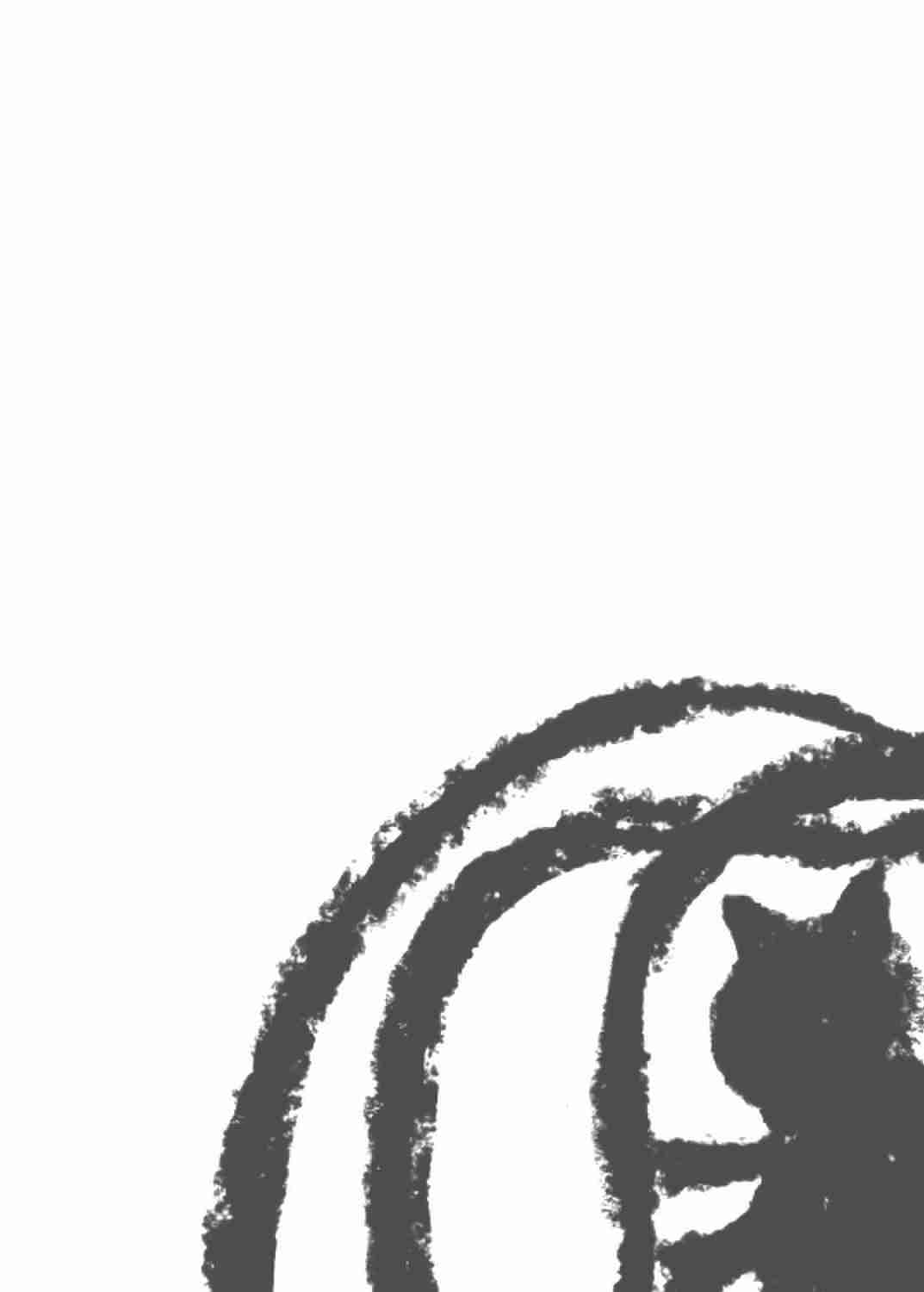Night is a black canvas sack of infinite size and capacity, stealthily slipping over the entire world. Come nightfall, we are all people in the sack, and no one can escape. Everyone gets used to their new conditions, adapting to life in the sack, installing all manner of lamps in an attempt to restore daylight, but it’s never quite as bright, and so life in the sack feels arid and dull, which is why we spend most of our time there sleeping.
Cats find themselves in the sack too, sometimes so quiet they seem to merge with the material, other times growing so rowdy you’d think they might tear a hole in the sack. As my husband and I lie in bed, we can clearly hear Cat’s claws going schwaa schwaa in the living room, telling us he is sprinting from one end of the couch to the other, back and forth in a wild relay race. Luckily, Cat and I formed a tacit agreement early on: in the pitch-black night, even when my ears tell me what Cat is getting up to, no matter how much destruction is involved, I won’t stop him. After all, his actions are invisible by night, and it’s easy to pretend that what we do not see does not exist.
By day, Cat sleeps with all his might, for as long as he possibly can, and when he’s finally had his fill, his body is replete with energy, which fuels him through the long night of activity in the black canvas sack, running around charting its dimensions. No one to date has figured out the measurements of this sack. Cat is trying his best to work it out, but its sheer size foils him, as does the short window of night. He can only explore a small section at a time, for the sack vanishes when daybreak arrives.
When darkness falls, Cat’s headlights come on: two bright spots of green, one in each eye. Even when his surroundings are unilluminated, Cat sees everything and can navigate with confidence, doing whatever he wants. Cat observes all this not by lighting up his surroundings but simply by brightening his own eyes. Cat eyes are able to stay on till dawn, expending neither electricity nor bodily energy.

If Cat were to remain still, the sack would turn immensely huge in an instant. Instead, he switches on his eye-lights and walks around, leaping from place to place. Any object—a nail, a lighter, a pair of scissors—might get brushed against at any moment, and each item that Cat touches is a border of the sack. By groping around in the dark, Cat uses his own body to measure the size of the sack. Every scratch of the sofa, each overturning of a jar, every disturbance of my books—all of these are the result of Cat testing the limits of his confinement. The sack shrinks and expands at will. At its largest, it swallows everything in the whole world and still has room to spare. At its tiniest, it shrouds Cat tightly, molding to his skin, so each little move brings him up against its walls.
